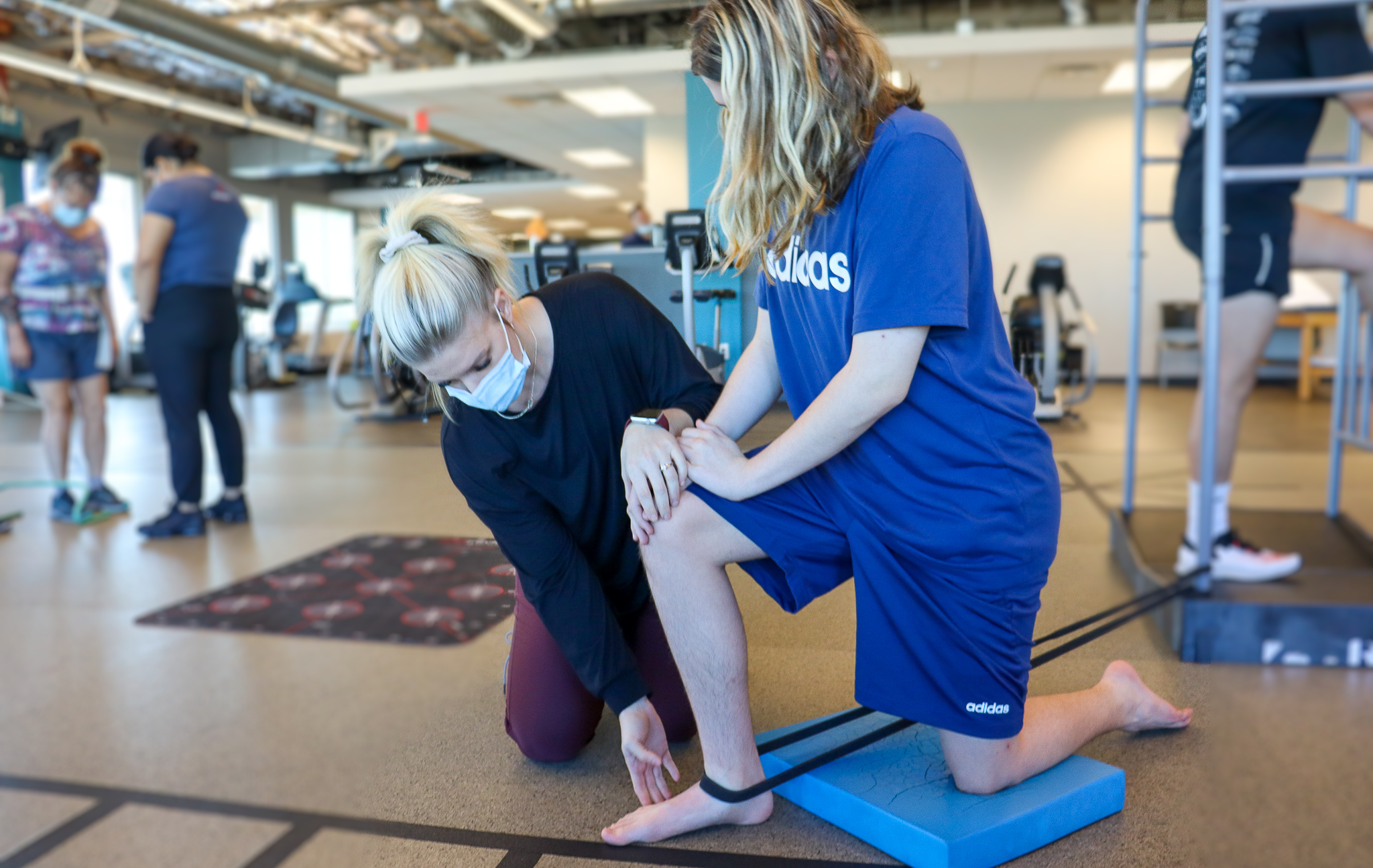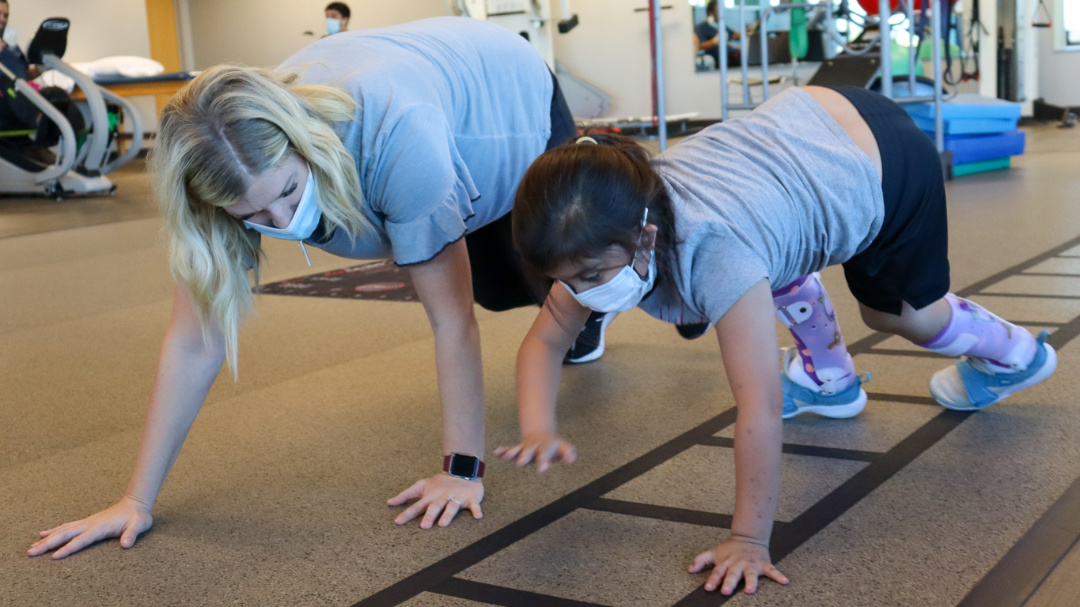By: Khristian McGinley, PT, DPT
Recognizing Underlying Causes of Toe Walking
It is common for parents and caregivers to hear that toe walking in children is “normal” and that their child will naturally “grow out of it.” The reality is that there is always an underlying reason that a child is walking on their toes. Typically, children exhibit this behavior to compensate for another area in their body that is lacking. Some of the causes of toe walking can include sensory, vestibular, visual, proprioceptive, or musculoskeletal deficits. It is our job as physical therapists to figure out what deficit is causing the toe walking and treat it.
Sensory Processing Disorder
If your child begins toe walking after age 3, it is more than likely caused by a deficit in their sensory system. By age 3-4, all of our sensory systems–touch, hearing, taste, sight, smell, vestibular, proprioceptive, and emotional–should start working well together. Symptoms of Sensory Processing Disorder include the following behavioral responses to sensory input: withdrawal from touch, excessive activity following movement, or increased “stim” behaviors, hitting, kicking, spitting, biting. They may demonstrate low endurance, difficulty lying on their tummy for extended time, and / or frequently falling. In conjunction with those symptoms, the child may also present with poor posture, clumsiness, awkwardness, accident proneness. If your child has Sensory Processing Disorder, they might also need excessive repetition to learn a new motor skill.
Our vestibular, visual, and proprioceptive systems contribute specifically to postural control and balance. Deficits in the vestibular system can manifest as late crawling or walking, difficulty with gross and fine motor skills, predisposition to motion sickness, and/or not liking head movements. If your child has a visual deficit, or a deficit in their vestibule-ocular reflex, they may also present as a toe walker. A deficit in the proprioceptive system can present as “clumsiness”, lack of awareness and body position, and minimal crawling as an infant. If your child walks on their toes, and also suffers from any of the above listed impairments, that impairment could likely be the cause of their toe walking. That impairment would be the primary focus of physical therapy treatment.(1)
Musculoskeletal Causes
There are musculoskeletal causes for toe walking as well. Your child may have musculoskeletal deficits if they do not fit the above criteria for Sensory Processing Disorder, if they crawled as an infant for 3 or more months, and if the onset of toe walking was before the child turned 3 years old. This can mean that your child simply has a weak core, weak glutes, tight calves, etc. The musculoskeletal cause of toe walking is the most easily treated form of toe walking.
How Spooner Can Help
Most kids do eventually grow out of toe walking, but that does not mean that years of toe walking will not cause long term developmental concerns down the road. This can include lack of coordination, knee pain, lower back pain, poor balance, and more. To avoid future musculoskeletal conditions, it is important to get toe walking evaluated and treated. Each of the above conditions that result in toe walking can be treated by a physical therapist and sometimes in conjunction with an occupational therapist, behavioral therapist, or other specialists. Physical therapists specialize in improving your child’s gross motor function, strength, coordination, and general movement patterns, so that your child can safely and successfully participate in the activities that they love.
Learn more about Pediatric physical therapy and occupational therapy at Spooner. Schedule an appointment or complimentary movement screen with a Spooner physical therapist or occupational therapist at one of our locations throughout the valley.
Reference
- iPersaud, L. (2019) Therapeutic Evaluation and Treatment of Toe Walking (Pediatric Equinus Gait). Know To Change, PLLC.



